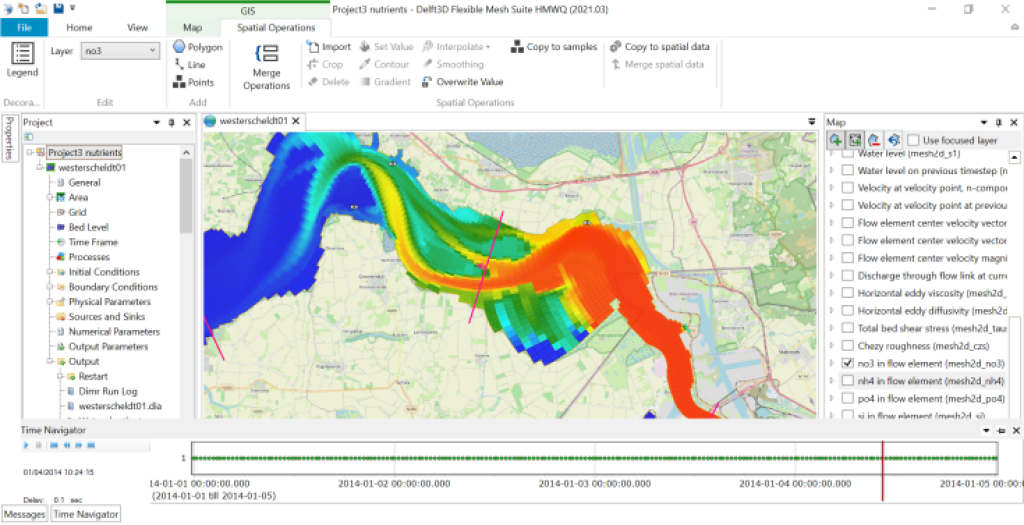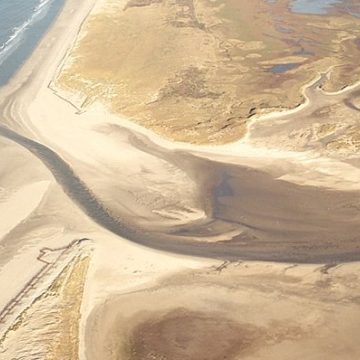D-Water Quality
D-Water Quality is environmental modelling software. With D-Water Quality researchers and consultants can model the water quality of surface waters and simulate future scenarios. Model simulations made with D-Water Quality support water managers in developing science-based policies to improve the chemical and biological water quality.
Capabilities of D-Water Quality
Research questions that we investigate with D-Water Quality software are, among others:
- How to improve the water quality of surface waters?
- How effective are environmental policies to meet the water quality standards?
- What are the consequences of pollutants for the functioning of ecosystems?
- Where and when do the runoff and discharge of nutrients lead to algae blooms?
- What is the impact of climate change, climate adaptation and the energy transition on the chemical and ecological state of surface waters?
D-Water Quality is modelling software for profound studies on resilient and healthy water systems for people and nature.
Deltares’ unsurpassed level of knowledge in the field of water quality is made available to the professional world by means of this module. The D-Water Quality module simulates physical, chemical, and biological processes in surface waters. D-Water Quality covers a range of substances and processes in water systems, such as oxygen, nutrients, algae growth, suspended matter, heavy metals, organic micropollutants and bacteria.
The D-Water Quality module simulates the far- and mid-field water and sediment quality due to a variety of transport and water quality processes. To accommodate these, it includes several advection diffusion solvers and an extensive library of standardized process formulations with the user-selected substances.
D-Water Quality can be applied to a variety of water systems: rivers, shallow lakes, estuaries, coastal waters and seas, rural and urban water systems.

Features of D-Water Quality
Algae model
A variety of algae growth and nutrient dynamics models are available in the D-Water Quality module. For instance, models describing the governing processes of biotic and abiotic ecosystems and the interaction between these are relevant to study eutrophication phenomena. This sub-module of the D-Water Quality module includes all algae connected water quality processes plus a variety of more detailed processes.
Sediment model
The D-Water Quality module simulates the transport, erosion and settling of cohesive and non-cohesive, organic or inorganic, suspended or bed sediments. This sub-module of the D-Water Quality module includes several standard transport formulae and considers different particulate fractions independently.
The effect of changes in the morphology of the bed are neglected, so that only short-term sediment transport can be assessed using the D-Water Quality module. As sediment is a dominating factor in water quality and ecology studies, the inclusion of Deltares’ leading-edge knowledge of sedimentation and silt transport processes makes this module the vital base tool for a large range of environmental studies.
Water quality model
D-Water Quality can be used to simulate the transport and fate of a wide range of substances. Default processes allow you to simulate for instance the decay of BOD and nitrification, elementary growth of algae and nutrient cycling, exchange of substances with the atmosphere, adsorption and desorption of contaminant substances and the deposition and resuspension of particles and adsorbed substances to and from the bed.
Tracer model
Fraction computations give insight in the fate of water discharges, from the source, during the transport throughout the water system, to the sea. This is a powerful tool for system analysis, for hydrologists and modellers alike.
Availability of D-Water Quality
The D-Water Quality module is part of Deltares’ integral software suites, such as the Delft3D FM 2D3D Suite and its predecessors SOBEK 2 Suite (for 1D simulations) and Delft3D 4 Suite (for 2D-3D simulations).
The computational kernel DELWAQ is at the core of D-Emissions, WFD-Explorer and MAMPEC, and coupled with the RIBASIM software.
Interested? Visit the pages of the software suites and products mentioned above to check for the development status and availability of the software.
Publications
-
Hindcasting harmful algal bloom risk due to land-based nutrient pollution in the Eastern Chinese coastal seas
-
Participatory Modelling of Surface and Groundwater to Support Strategic Planning in the Ganga Basin in India
-
Habitat suitability modelling to improve understanding of seagrass loss and recovery and to guide decisions in relation to coastal discharge
-
Modeling mixoplankton along the biogeochemical gradient of the Southern North Sea



